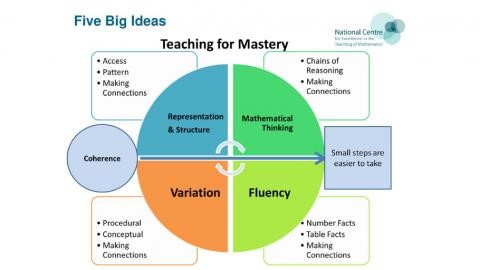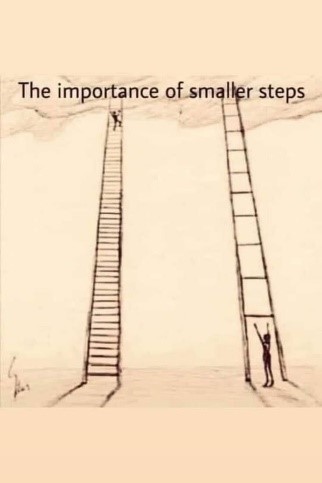- Cranmere Primary School - Whole School Maths Overview 2024 - 2025
- Information for parents multiplication tables check
- Maths Calculation Policy - AS
- Maths Calculation Policy - MD
- Parents Presentation Autumn 2023
- Year 3 and 4 - MTC parents presentation
Maths

‘Mathematics is a creative and highly inter-connected discipline that has been developed over centuries, providing the solution to some of history’s most intriguing problems. It is essential to everyday life, critical to science, technology and engineering, and necessary for financial literacy and most forms of employment. A high-quality mathematics education therefore provides a foundation for understanding the world, the ability to reason mathematically, an appreciation of the beauty and power of mathematics, and a sense of enjoyment and curiosity about the subject.’
National Curriculum 2014
The national curriculum for mathematics aims to ensure that all pupils:
- become fluent in the fundamentals of mathematics, including through varied and frequent practice with increasingly complex problems over time, so that pupils develop conceptual understanding and the ability to recall and apply knowledge rapidly and accurately
- reason mathematically by following a line of enquiry, conjecturing relationships and generalisations, and developing an argument, justification or proof using mathematical language
- can solve problems by applying their mathematics to a variety of routine and non-routine problems with increasing sophistication, including breaking down problems into a series of simpler steps and persevering in seeking solutions
Intent
At Cranmere, we aim for our children to succeed in mathematics and we want to instil this belief in children themselves. We aim for children to demonstrate depth of mathematical concepts and make important connections within other areas of learning as well as the outside world. Through establishing these connections, children are able to develop their fluency, mathematical reasoning and competency in solving increasingly sophisticated problems – the main aims of the National Curriculum. We hope that all children grow to have an appreciation of mathematics, whilst developing a sense of enjoyment and curiosity about the subject.
We centre our curriculum around the 5 big ideas:

Fluency
Efficient, accurate recall of key number facts and procedures is essential for fluency, freeing pupils’ minds to think deeply about concepts and problems, but fluency demands more than this. It requires pupils to have the flexibility to move between different contexts and representations of mathematics, to recognise relationships and make connections, and to choose appropriate methods and strategies to solve problems.
Mathematical Thinking
Mathematical thinking is central to how pupils learn mathematics and includes looking for patterns and relationships, making connections, conjecturing, reasoning, and generalising. Pupils should actively engage in mathematical thinking in all lessons, communicating their ideas using precise mathematical language.
Variation
The purpose of variation is to draw closer attention to a key feature of a mathematical concept or structure through varying some elements while keeping others constant.
- Conceptual variation involves varying how a concept is represented to draw attention to critical features. Often more than one representation is required to look at the concept from different perspectives and gain comprehensive knowledge.
- Procedural variation considers how the student will ‘proceed’ through a learning sequence. Purposeful changes are made in order that pupils’ attention is drawn to key features of the mathematics, scaffolding students’ thinking to enable them to reason logically and make connections
Reasoning and Problem Solving
Teachers carefully select representations of mathematics to expose mathematical structure. The intention is to support pupils in ‘seeing’ the mathematics, rather than using the representation as a tool to ‘do’ the mathematics. These representations become mental images that students can use to think about mathematics, supporting them to achieve a deep understanding of mathematical structures and connections.
Coherence
Coherence is “the approach of progressively unfolding the mathematics.” Gu 2018 Teaching is designed to enable a coherent learning progression through the curriculum, providing access for all pupils to develop a deep and connected understanding of mathematics that they can apply in a range of contexts.
Implementation
The content and principles underpinning the 2014 National Mathematics curriculum and the Maths curriculum at Cranmere embrace Teaching for Mastery: a product of extensive research into the highly successful teaching practices in Singapore and Shanghai. We have been engaged with the NCETM (National Centre of Excellence in Teaching Mathematics) as a school since September 2022 and have use their curriculum as the basis for our own; tailoring it for our children’s needs. To avoid superficial, surface learning, a whole class teaching approach is embraced, using small steps to keep the class working together and challenging activities to deepen understanding.
In addition, the learning needs of every child are addressed through skilful questioning. We believe in exposing the children to multiple representations of a concept, using concrete, pictorial and abstract examples* to support the children’s understanding. The use of manipulatives is encouraged in every year group to expose the structure of the mathematical concept being taught. This enables children to develop and embed their skills of fluency, reasoning and problem-solving. Each lesson provides the means to achieve greater depth, with children being offered rich and sophisticated problems, as well as creative, exploratory and investigative tasks, as appropriate.
Communication, including the use of talk partners, is an essential element of our mathematics lessons. Children are encouraged to discuss their mathematics in order to both support others and deepen their own knowledge. In order to generalise about maths, all children rehearse STEM sentences which form the basis of their reasoning for a specific learning intention. These further enable them to justify their mathematical understanding with a supportive structure. Tasks are designed carefully by teachers to provide intelligent practice and we focus on the relationships between mathematical concepts and skills and provide opportunities for children to use their understanding flexibly. Scaffolds are provided to enable all pupils to access the learning.

Impact
Children are assessed on their knowledge and skills regularly and in a variety of ways. Teachers respond to pupils’ work through written marking and verbal feedback on a whole class, group, paired or individual level. Low stakes quizzes and testing takes place termly on the curriculum areas that children have been learning so far.
SATs are useful indicators but only represent a sample of what pupils have learnt. It is important that this is balanced with first hand evidence such as work in childrens’ books and their pupil voice.
|
Pupil Voice |
|
In September 2023, children said: EYFS - ‘I like learning maths, we are learning about numbers. This is one 1 Lego and this is two Lego’ Year 1 – ‘My favourite part of maths is learning to write numbers’ ‘We love Numbots and Number Blocks’ ‘My teachers and my friends help me’ Year 2 – ‘I love everything about maths, it’s so fun’ ‘I am challenged and I can do it’ ‘I like it when we say the numbers together’ Year 3 – ‘It’s fun and I learn a lot’ ‘I think I am good at maths’ Year 4 – ‘We are learning more our year 3 learning’ ‘Using numbers makes me smarter for living in the real world’ ‘I enjoy fractions and times tables the most’ Year 5 – ‘I like learning new things in maths for life’ ‘I like understanding things and getting things right’ ‘I enjoy solving problems’ Year 6 – ‘It’s fun using my head and challenging myself’ ‘I like it when we are all doing, I learn better’ ‘I am proud of my maths book’
Children think maths can be improved by: ‘Doing things in real life, measuring water and distance when looking at scales’ ‘Using computers more in maths lessons’ ‘Even harder challenges’ |

